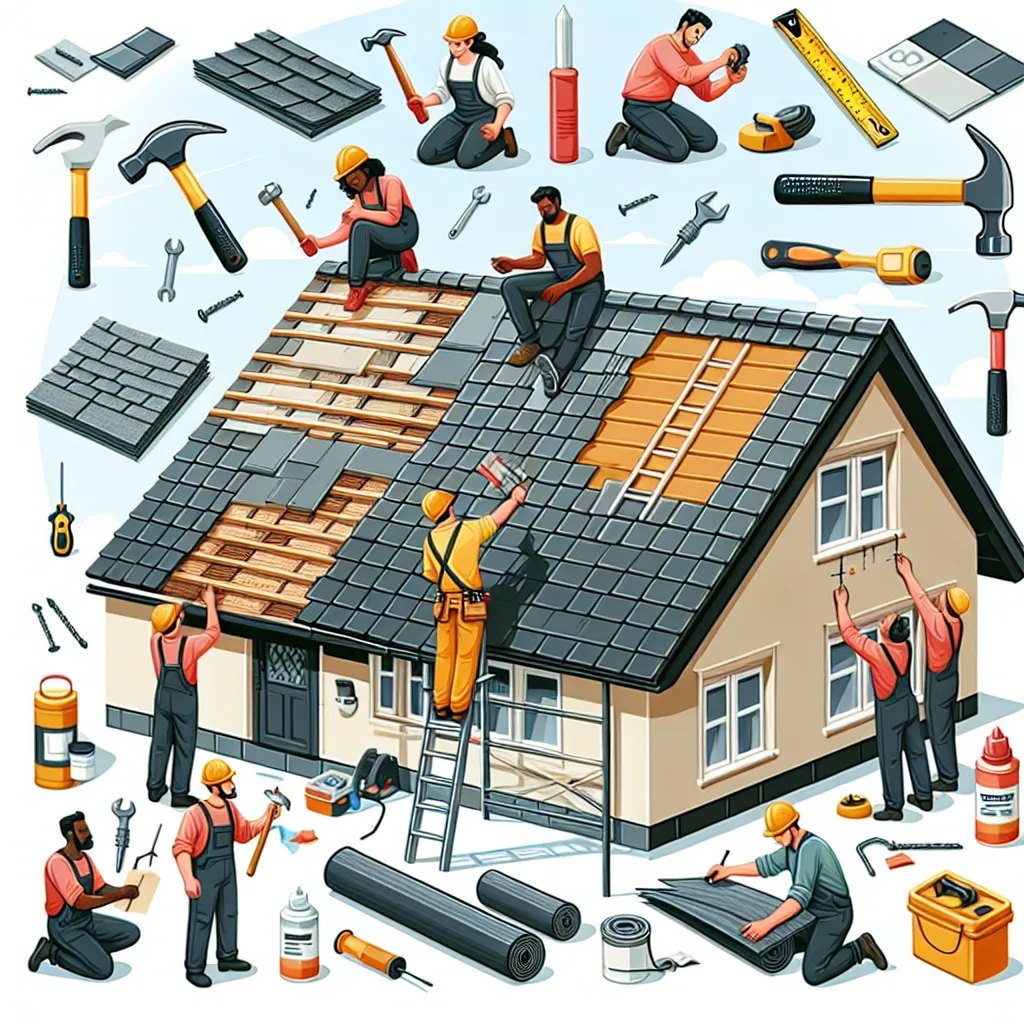Roofers repair isn’t just about patching a leak or swapping out a shingle. It’s about keeping our safe spaces dry, sturdy, and ready for the wildest weather. Sometimes, the quickest fix isn’t the best one, and a little know-how goes a long way. Let’s break down what really matters when it comes to roofers repair—no jargon, no runaround, just the facts.
What Is Roofers Repair and Why Do We Care?
Roofers repair is the hands-on process of fixing damage or wear on a building’s roof, whether from storms, age, or surprise issues. We care because the roof shields everything below it—our families, our work, and all the stuff we can’t replace. When roofers repair is done well, we get peace of mind and skip expensive headaches down the road.
Why Roofers Repair Is a Big Deal
- Protects property and people: A solid roof stops water, wind, and critters from sneaking in.
- Preserves value: Homes and businesses with well-kept roofs keep their worth.
- Saves money: Small repairs now beat massive replacements later.
- Boosts energy efficiency: Proper repairs help regulate indoor temps, cutting energy bills.
Benefits and Drawbacks of Roofers Repair
We all want the upside, but any roofing choice comes with a flip side. Here’s what we’ve learned the hard way.
Key Benefits
- Fast fixes: Some repairs can be done in a single afternoon.
- Budget-friendly: Repairs cost less than full replacements.
- Less disruption: We can often stay put while the work gets done.
Potential Drawbacks
- Short-term fixes: A bad repair job might not last through the next storm.
- Hidden damage: Surface repairs might miss deeper problems.
- Mismatch risk: Replacement materials may not match the original look.
Table: Roofers Repair Pros and Cons
| Benefit | Drawback |
|---|---|
| Quick turnaround | Possible patchwork look |
| Lower upfront cost | May need repeat repairs |
| Minimal disturbance | May mask bigger issues |
Where Roofers Repair Really Shines
Not every roof problem needs a full overhaul. Here’s where roofers repair is our go-to move.
Practical Use Cases
- Storm damage: Lost shingles, dented flashing, or a branch through the roof? Repairs keep the elements out.
- Age-related wear: Cracks, blisters, or lifting seams often just need a targeted fix.
- Ponding water: Some modern repair products even handle those tricky, flat-roof puddles.
- Small leaks: Catching and patching leaks early means less water damage inside.
Real-World Examples
- The School Gym Rescue: Last winter, a school in Ohio found water stains in their gym ceiling. Instead of closing the gym, a targeted roofers repair stopped the leak in a day, and class went on as usual.
- The Warehouse Windstorm: After a spring storm, a warehouse had loose metal panels flapping in the breeze. Roofers repair secured the panels and sealed the seams, protecting millions in inventory.
- The Cozy Café: An old café’s flat roof sprung a leak during a downpour. With a quick, eco-friendly patch, the café reopened in time for the lunch rush—no lost business, no soggy muffins.
What to Look for in Roofers Repair Solutions
It’s easy to get lost in the options. Here’s how we cut through the noise.
Evaluating Materials and Methods
- Durability: Will the repair hold up for years, or just a few months?
- Compatibility: Does the product stick to our roof’s material (metal, membrane, shingle)?
- Weather resistance: Can it handle blazing heat, biting cold, and wild storms?
- Application method: Some repairs need tools, others just a roller or trowel.
- Cure time: The faster it sets, the sooner life gets back to normal.
Table: Popular Roofers Repair Features
| Feature | Why It Matters |
|---|---|
| UV stability | Stops sun damage, especially on flat roofs |
| No fabric needed | Speeds up repairs, fewer steps |
| Wide temp range | Works in all seasons |
| Eco-friendliness | Safe for us and the environment |
Cost Considerations
- Material cost: Cheaper isn’t always better.
- Labor cost: DIY saves money but risks mistakes.
- Longevity: Spending more now can mean fewer repairs later.
Pro Tips for Choosing the Right Roofers Repair
- Ask for a warranty on the repair.
- Make sure the repair matches your existing roof.
- Choose products rated for your climate.
- Keep an eye on the forecast—rain and repairs don’t mix!
- Always check for hidden damage before patching.
Most-Asked Questions About Roofers Repair
1. How long does a roofers repair usually last?
A well-done repair can last several years, but it depends on the materials used and the roof’s age.
2. Can I do roofers repair myself?
Some small fixes are DIY-friendly, but for leaks or structural damage, we recommend calling a pro.
3. Will my insurance cover roofers repair?
It depends on the cause—storm damage is often covered, but age-related wear might not be.
4. How do I spot roof damage early?
Look for missing shingles, curled edges, water stains, or granules in gutters after heavy rain.
5. What’s the best time of year for roofers repair?
Spring and fall are ideal—mild weather helps materials cure and workers stay safe.
6. Is patching a roof just a temporary fix?
Not always! Quality products and technique can make a patch last for years.
7. How much does roofers repair cost?
It varies, but most minor repairs run a few hundred dollars. Larger issues or specialty materials may cost more.
In A Nutshell
Roofers repair is the unsung hero that keeps our homes and businesses standing strong. We know what works, what doesn’t, and how a good repair saves us money, time, and stress. Next time you hear raindrops on the roof, you’ll know you’ve got it covered—literally.
Roofers Repair
Roofers repair is essential for maintaining the integrity of your roof, especially after storms or wear over time. It involves fixing leaks, replacing damaged shingles, or sealing seams to prevent water intrusion.
Why Choose Roofers Repair?
- Cost-effective: Fix small issues before they turn into costly replacements.
- Quick turnaround: Most repairs can be done in a day, minimizing disruption.
- Long-lasting: Quality repairs with the right materials, like , can last years.
How to Evaluate Repair Options
| Feature | Importance |
|---|---|
| Material Durability | Ensures the repair withstands weather conditions |
| Compatibility | Works seamlessly with existing roof materials |
| Weather Resistance | Keeps water out during storms and heavy rain |
Compare repairs over time: a small, quality fix now beats expensive, recurring problems later.
Trust us to handle your roofers repair with expertise and top-grade solutions. Contact us today and protect your property before issues worsen!
Frequently Asked Questions About Roofers Repair
How long does a roofers repair usually last?
A well-done repair can last several years, depending on the materials used and the roof’s age.
Can I do roofers repair myself?
Some small fixes are DIY-friendly, but for leaks or structural damage, it’s best to call a professional.
Will my insurance cover roofers repair?
It depends on the cause; storm damage is often covered, but age-related wear might not be.
How do I spot roof damage early?
Look for missing shingles, curled edges, water stains, or granules in gutters after heavy rain.
What’s the best time of year for roofers repair?
Spring and fall are ideal because mild weather helps materials cure and keeps workers safe.

